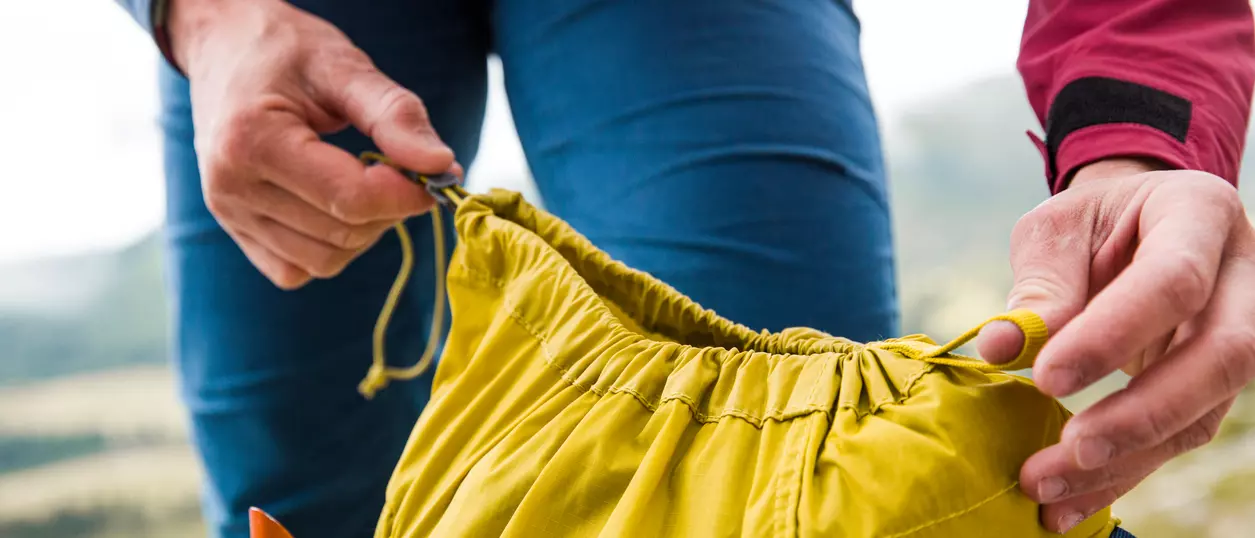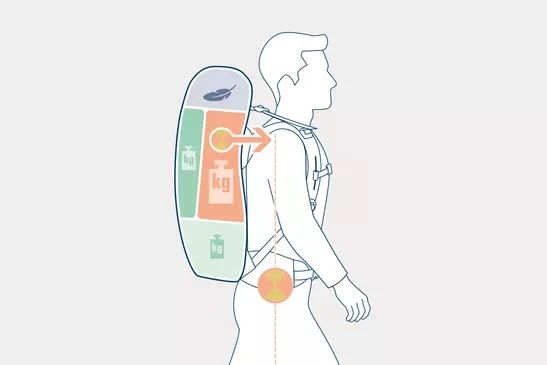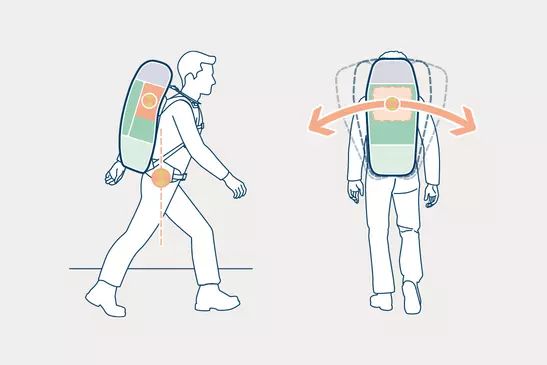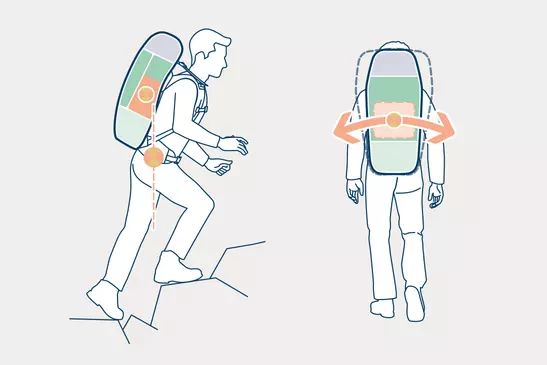PACKING YOUR BACKPACK

HOW DO I PACK MY BACKPACK CORRECTLY?
Naturally, however, you do need a few important things. In the following video, we show you how to maximise the efficiency of your trip by packing everything in the right place.
We wish you lots of fun packing and a really great trip!
DEUTER TIP
HOW TO PACK YOUR BACKPACK
DISTRIBUTE WEIGHT OPTIMALLY
The centre of gravity of your backpack should be close to your body and, if possible, at shoulder height. This way, the backpack is always above the body’s own centre of gravity (COG) and it will not pull back when worn. Larger backpacks from around 30 litres are therefore packed as follows:
- Sleeping bag, down items and other lightweight objects go into the bottom compartment.
- Moderately heavy items such as clothing go on top on the outside.
- Heavy equipment – tent, supplies, thick jackets – are packed at upper shoulder height, as close to the back as possible.
- Small items can be safely stowed in the lid compartmentwhere they are quickly accessible.
- In order to avoid problems such as snagging, larger wind-exposed areas or wetness, attach as little as possible to the outside of the backpack, and keep this as compact as possible.
- In general, ensure an even weight distribution, especially for side pockets.
- Packsacks, providing they are not bulging and thus creating dead space, keep the inside tidy. Waterproof packsacks offer a very secure alternative to a rain cover.
TO CONSIDER WHEN PACKING YOUR BACKPACK
When packing your backpack, it’s not just the size of your backpack that dictates how you should pack, but also the route or kind of hike/ trek that you’re going to undertake. So here are a few tips:

A trained person can wear a maximum of 20–25% of their body weight over a longer period of time. The German Federal Armed Forces pushes this figure up to 33%. For them, touring with a backpack is notoriously extremely strenuous!
WRONG

The backpack is pulling backwards – i.e. the backpack’s COG is too far from that of the body. Heavy weights quickly turn walking into a misery because the body has to work against the weight of the backpack. The shoulder straps put more stress on the shoulders than normal. In difficult terrain, the wrong packing technique can become a safety risk.
IN LIGHT TERRAIN

In light terrain (hiking trails, flat paths), the COG of the load should be packed higher up.
IN LIGHT TERRAIN

In difficult terrain (mountainous regions, steep paths), it should be somewhat lower and, thus, closer to the body’s centre of gravity. With this packing technique, you tend to bend forwards slightly as you walk to compensate, but it is also easier to keep your balance than it is with a high centre of gravity.
PACKING LISTS
The same rule applies to any trip: take as little as possible – but as much as necessary!
Together with the certified mountain guides from the Association of German Mountain and Ski Guides, from the OASE Alpin Centre and from jdav, we have amassed a wealth of experience that we can share with you in the form of packing lists. Please note that all weights are only recommendations and may deviate.
In general, one can assume: the higher quality the equipment, the lighter it is.
Watch the video check off the individual points in the list below and download the packing list as a PDF:
All weights are only recommendations. We assume no liability for completeness and correctness. deuter Sport GmbH in cooperation with the Association of German Mountain and Ski Guides e.V.
DO YOU HAVE EVERYTHING NOW?
If not, you can take a look at our backpacks, sleeping bags, bags and accessories!
